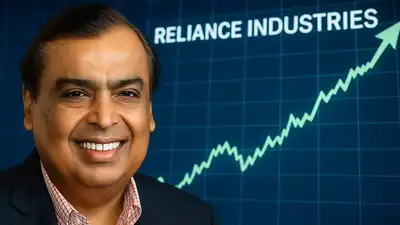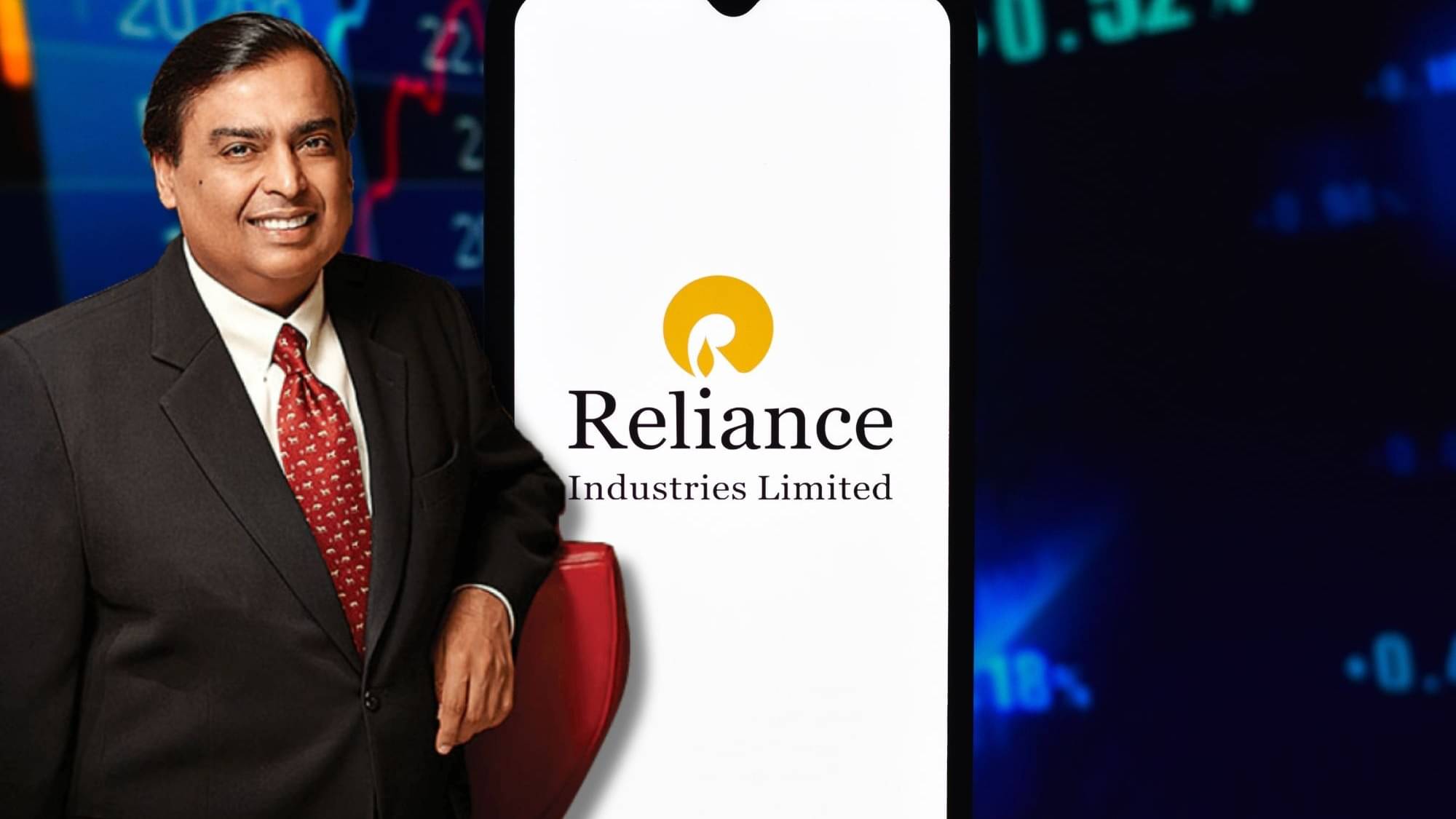Reliance Industries Limited (RIL), India’s most valuable conglomerate, has announced a record-shattering 78.32% year-on-year rise in consolidated net profit for Q1 FY2026, clocking in at ₹26,994 crore compared to ₹15,138 crore in the same quarter last year. This eye-popping performance—fueled in part by a significant one-time gain and ongoing strength across retail and digital verticals—has set a new benchmark for the group and offers fresh signals about the direction of India’s economy and consumer markets in fiscal 2026.
As Chairman and Managing Director Mukesh Ambani declared, “Reliance has begun FY26 with a robust, all-round operational and financial performance. The consolidated EBITDA for 1Q FY26 improved strongly from a year-ago period, despite significant volatility in global macros.” Here’s an authoritative, in-depth breakdown of RIL’s Q1 results, segment-by-segment, and what it means for investors, regulators, and India’s growth story.
1. Headline Numbers: Highest-Ever Quarterly Profit and Revenue Growth
-
Consolidated net profit: ₹26,994 crore (up 78.32% YoY)
-
Revenue from operations: ₹2,48,660 crore (up 5.27% YoY)
-
EBITDA: ₹58,024 crore (up 36% YoY)
-
EBITDA margin: 21.2% (up 460 basis points YoY)
The surge in profit was supercharged by a one-time gain of ₹8,924 crore from the sale of RIL’s stake in Asian Paints. Even after adjusting for this, operational performance across digital, retail, and energy verticals supported the robust momentum.
2. Retail: Reliance Retail Posts All-Time Highs
Reliance’s retail segment further solidified its reputation as a juggernaut:
-
Q1 Revenue: ₹84,171 crore (11.3% YoY growth)
-
EBITDA: ₹6,381 crore (up 13% YoY)
-
Profit after tax (PAT): ₹3,271 crore (up 28.3% YoY)
This stellar growth was driven by best-ever performances in grocery and fashion, along with major gains in the electronics and digital commerce categories. The company noted a sharp 175% YoY surge in hyper-local JioMart Quick daily orders and sustained growth through store network expansion and digital engagement.
All segments under Reliance Retail delivered positive growth—even as early monsoons briefly impacted the consumer electronics and devices segment.

3. Jio Platforms: Digital Dominance Accelerates
The digital and telecom arm continued its leadership, driven by 5G rollouts and broadband penetration:
-
EBITDA: ₹18,135 crore (up 24% YoY), with a margin gain of 210 basis points
-
5G subscribers: Surpassed 200 million
-
Home broadband connections: Crossed 20 million
-
JioAirFiber: Now the world’s largest fixed wireless access (FWA) service
JioHotstar shattered records as the preferred platform for IPL, serving over 652 million digital viewers with a peak of 55.2 million concurrent users—cementing RIL’s digital entertainment dominance. JioMart’s Quick business also gained momentum, reflecting a massive jump in local e-commerce traction.
4. Oil-to-Chemicals (O2C): Stability Amid Global Volatility
RIL’s cornerstone O2C division faced margin pressure due to lower crude oil prices and a planned plant shutdown, which resulted in:
-
O2C EBITDA: ₹4,996 crore (slightly down YoY from ₹5,210 crore)
-
O2C Revenue: 1.5% YoY decline
However, the domestic placement of transportation fuels—aided by Jio-bp, with a 35% jump in volumes—helped cushion the segment. Despite the global headwinds, integrated operations and focus on high-margin domestic segments kept income steady.
The first quarter’s upbeat performance by Reliance Industries underscores a broader narrative emerging in India Inc.—where multi-sector conglomerates with strong cash flows, digital infrastructure, and diversified portfolios are steering clear of global headwinds and leveraging domestic consumption themes. At a time when uncertainty looms over geopolitical developments and global commodity cycles, Reliance’s India-first strategy seems to be paying off, particularly with retail and digital revenues expanding at a pace outstripping traditional oil-driven earnings. This shift is a reflection not just of the group’s strategic intent but of India’s growing appetite for connectivity, convenience, and organized retail.
Reliance Retail has now become far more than a traditional brick-and-mortar network. With a deep-rooted supply chain, high rural reach, and aggressive pricing models, the retail arm has created an ecosystem of brands, tech, logistics, and data that feed into one another. The bumper growth from JioMart Quick, its hyperlocal delivery arm, indicates how well the company has gauged the post-pandemic consumer behavior shift towards speed and convenience. From groceries and apparel to electronics and prescription drugs, Reliance has created what many analysts now call the only real competitor to the global e-commerce giants in India.
In the telecom and digital vertical, Jio continues to operate at an industry-leading ARPU (Average Revenue Per User), aided not only by subscriber growth but also by an increasing share of higher-end 5G users who are adopting data-heavy services like HD OTT consumption, gaming, and cloud-based utilities. The rollout of JioAirFiber, now reportedly the world’s largest fixed wireless access service, has bridged internet access for millions, especially in small-town and semi-urban India. Its rapid growth is emblematic of India’s digital leapfrogging—and Reliance’s central role in enabling that transition.
Meanwhile, Reliance’s Oil-to-Chemicals business, though subdued compared to glamorous digital and retail units, remains a foundational pillar. A vertical integration strategy—from crude refining to petrochemical derivatives—gives RIL a rare agility to adapt production toward the most margin-accretive outcomes. This flexibility was clear in Q1, as the business strategically used low crude prices to drive domestic fuel placement, even as global product spreads narrowed. Similarly, the firm’s long-term investments in green hydrogen, circular plastics, and carbon capture suggest that O2C will evolve into a sustainability-driven vertical over the next decade, allowing it to stay relevant as global ESG regulations tighten.
Reliance’s investments in new energy and sustainability won’t show immediate financial returns but play a vital role in future-proofing the business. The group’s declared target of becoming a net-zero carbon emission entity by 2035, already backed by investments in solar PV, battery storage, and green hydrogen, positions RIL to lead the energy transition in the Global South. Partnerships, including international tie-ups in the US and Middle East, hint at a future where India may become a green-energy exporter—and Reliance a key enabler. Integrating petrochemical manufacturing with low-carbon solutions can prove crucial going forward, as long as execution keeps pace with ambition.

Financially, while the one-time gain from the stake sale in Asian Paints gave this quarter an artificial boost, long-term investors and analysts seemed more soothed by the steady underlying profit growth, especially in retail and Jio. EBITDA margins are improving, capex is largely pre-funded via past equity infusions, and net debt continues to fall. This trend helps position Reliance within a small league of large corporations globally that can fund billion-dollar infra projects while maintaining financial discipline. Credit outlook for the group also remains stable, aided by sovereign-level backing and operational transparency to investors across geographies.
An important part of Reliance’s growing capability is its capital discipline amid expansion. Unlike in the past, where heavy debt-funded growth gave pause to some observers, today RIL operates with clearly delineated business arms—each responsible for its P&L, cash generation, and capital expenditure cycles. The staggering capex numbers in Q1, especially toward 5G rollouts, were foreseen and well-planned over multiple past quarters. Moreover, group CFOs and board oversight now ensure that each cash-burning vertical (like JioCinema or Renewable Energy) has either an eventual monetization path or a backing investor like KKR, ADIA, or GIC.
With FY26 now underway, all eyes will be on how Reliance sustains the momentum in Q2 and Q3, traditionally stronger quarters for consumer business due to festive demand. Several new store launches, 5G expansion to more remote towns, and the potential monetization of Jio Financial Services could add further steam to the engine. The conglomerate’s track record suggests it is on course to beat even internal benchmarks. But challenges remain too—regulatory scrutiny in telecom, policy shifts in retail foreign ownership, and volatility in global oil economics. For now, however, Reliance’s Q1 script is a lesson in how to win across verticals, while building for a future that’s not just profitable, but sustainable.
5. Oil & Gas: Solid Numbers with a Note of Caution
-
EBITDA: ₹4,996 crore vs ₹5,210 crore YoY
-
Production: Down due to lower output from the Krishna Godavari Dhirubhai-6 block
This segment delivered stability, but analysts highlighted a 10% YoY EBITDA decline, primarily from a production drop at KG-D6, and cautioned that output and margins may remain under pressure if volumes are not scaled up in the coming quarters.
6. One-Time Gains, Capex, and Finance Costs
A major pillar of the Q1 profit spike was the one-time gain realized from the sale of RIL’s stake in Asian Paints.
-
Other income: Boosted by this gain, helping surpass analyst expectations.
-
Capex (Q1 FY26): ₹29,875 crore (~$3.5 billion), primarily tied to expanding digital infrastructure (notably Jio 5G networks), retail footprint, and new energy/chemical investments.
-
Finance costs: Up 18.9% YoY to ₹7,036 crore due to operationalization of high-investment 5G spectrum assets.
7. Management Commentary: Ambani’s Vision and Strategy
Mukesh Ambani’s statements highlighted:
-
Confidence that Reliance will “continue its stellar track record of doubling every 4-5 years”.
-
Commitment to India’s growth trajectory and leadership in energy transformation and digital innovation.
-
Plans to further integrate technology, green energy, and consumer services for “inclusive growth”.
Ambani underscored resilience and adaptability in the face of global headwinds, and set ambitious targets for the conglomerate’s future.

8. Shareholder and Market Reaction
Despite record results, RIL shares fell up to 3% in early Monday trading. Market experts attributed this paradox to a “sell-on-news” reaction, as well as profit taking after a strong rally in previous months. Some analysts also flagged that the Q1 earnings beat was heavily supported by exceptional items, urging investors to focus on underlying, recurring profit momentum.
Nevertheless, most brokerages remain bullish, emphasizing growth in Jio and Retail along with a likely recovery in the O2C segment as global conditions stabilize.
9. Key Risks, Challenges & Looking Ahead
-
O2C Margin Pressure: Continued volatility in crude oil could impact refining and petrochemical margins.
-
Oil & Gas Output: Sustained recovery in upstream volumes is vital.
-
Retail & Digital Expansion: Execution risk as RIL ramps up footprint and maintains leadership in a highly competitive market.
-
Finance Costs & Leverage: Higher interest outgo post-5G investments means cash flow discipline is critical.
-
Sustainability Imperative: Transition to green and new energy must remain a priority for long-term growth.
RIL’s outlook remains robust: executives are targeting further gains in digital, a rebound in global chemicals demand, and deeper penetration into Tier 2 and Tier 3 Indian cities via retail.
Conclusion: Reliance’s Multi-Engine Growth Sets a New Standard
Reliance Industries’ Q1 2026 results reflect a company firing on all cylinders—delivering the highest-ever quarterly profit, double-digit top-line growth in Retail and Digital, and maintaining strategic discipline in Oil & Gas and Chemicals. The conglomerate’s ability to diversify risk across sectors, push new platforms, and deploy capital at scale confirms its status as India’s most future-focused business.
Ambani’s pledge to double the group’s size every 4–5 years underlines this confidence. For investors, policymakers, and consumers, these historic Q1 numbers aren’t just a blip—they’re a blueprint for what the next chapter of India Inc. might look like.
Follow: Reliance

